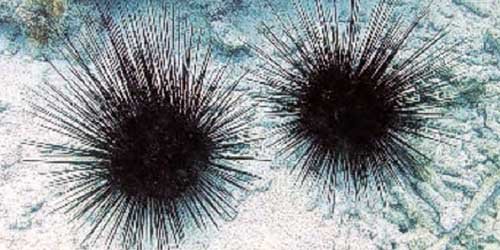The Fisheries and Marine Resources Unit has determined that sea urchins around the island are dying. Reportedly the same is happening in other islands such as the US Virgin Islands, Dominica, St. Lucia, St. Vincent and Saba. The Fisheries Unit is joining regional and international fisheries and coral reef-monitoring bodies such as the Atlantic and Gulf Rapid Reef Assessment to determine the case or cases of the sea urchins’ unexplained mass deaths. They are also working on finding feasible solutions to rebuild the urchin populations. The Unit will also continue to monitor regional actions, adopt applicable solutions and continue to survey Anguilla’s coastlines, as well as create sea urchin nurseries.

Sea urchins are spherical, spiny-looking echinoderms. They are closely related to starfish, brittle stars, sea cucumbers and sea lilies. There are over 950 species of sea urchins in the world. Some of the most popular species in Anguilla are the Tripneustes ventricosus (white sea eggs), Eucidaris tribuloides (pencil urchins) and Diadema antil¬larum (long-spined sea urchins).
Sea urchins are the most important herbivore on coral reefs. They are critical to maintaining coral reefs’ health. Sea urchins eat algae, which keeps reefs clean, facilitating coral recruitment and growth. Sea urchins also form part of the diets of certain marine species.
In the early 1980s there was a mass die-off of urchins around the world, much like what is occurring today. The 1980s die-off mostly affected the Diadema antillarum. To combat the high mortality in Anguilla at that time, urchins were transferred from areas of high density to areas where very few or none had survived. Since the ’80s there have not been any reported cases of mass sea urchin deaths until now.
Anyone seeing cases or suspected cases of sea urchin die-off are asked to report to the Fisheries and Marine Resources Unit.
The Daily herald

 Saba News News and Information from Saba Island, Dutch Caribbean
Saba News News and Information from Saba Island, Dutch Caribbean
